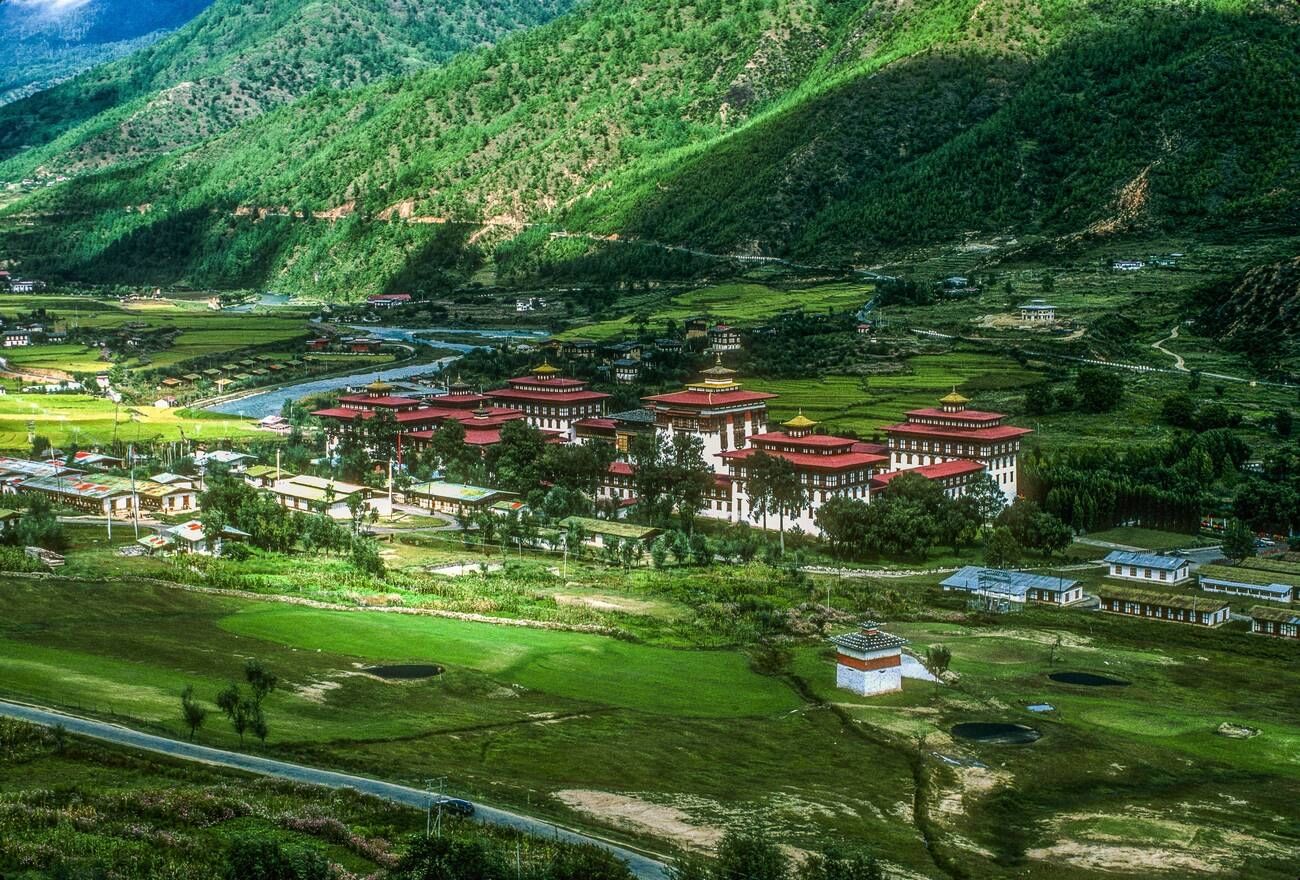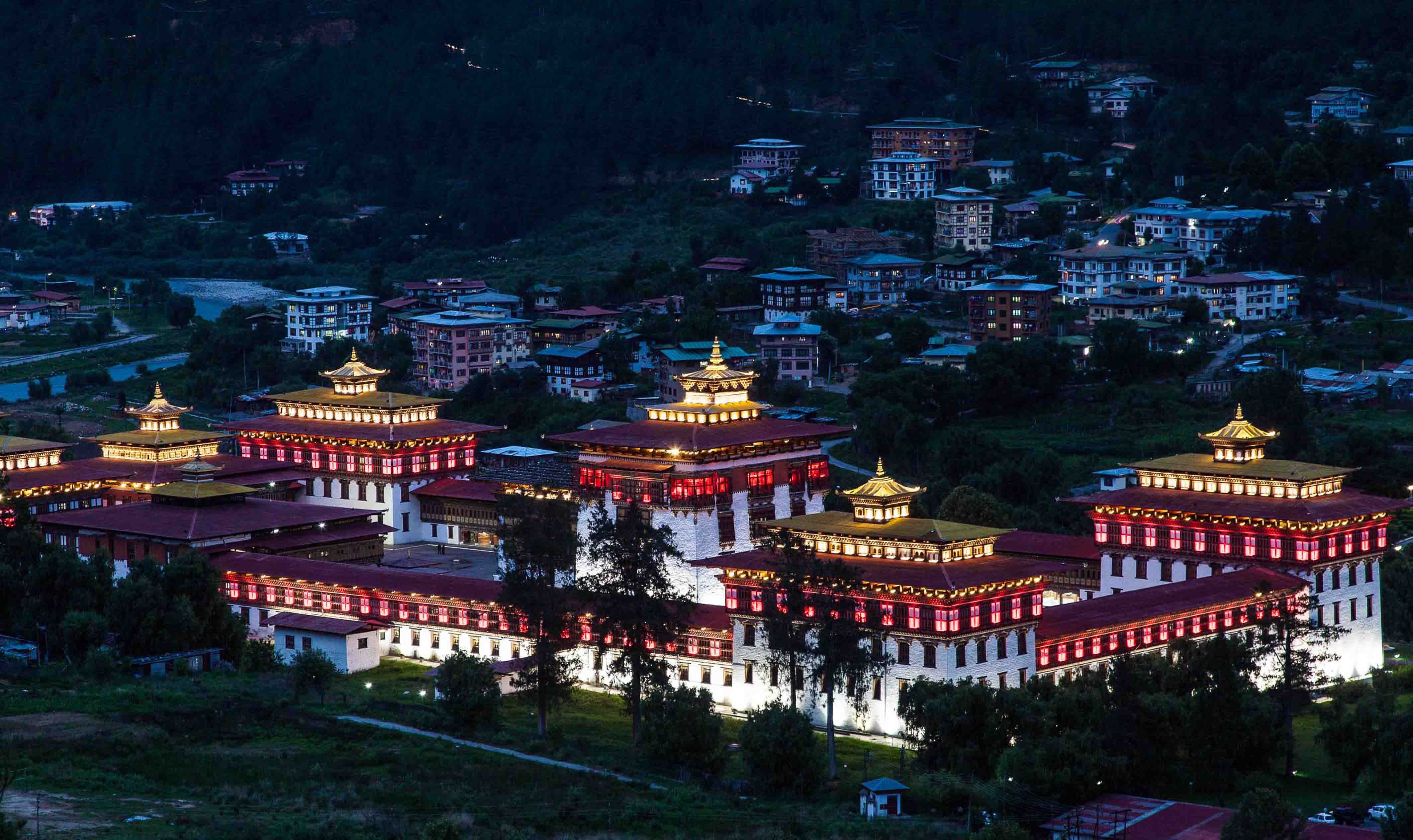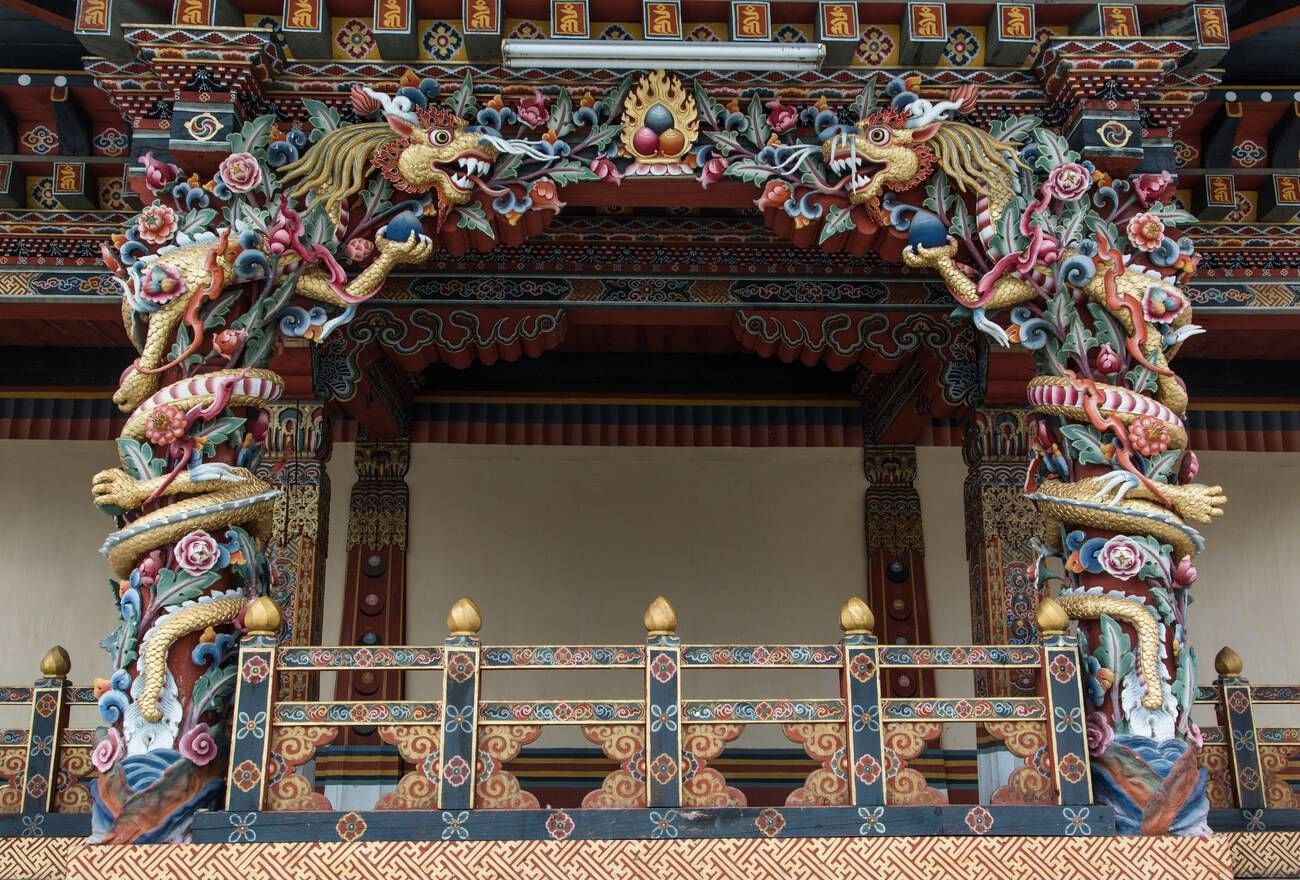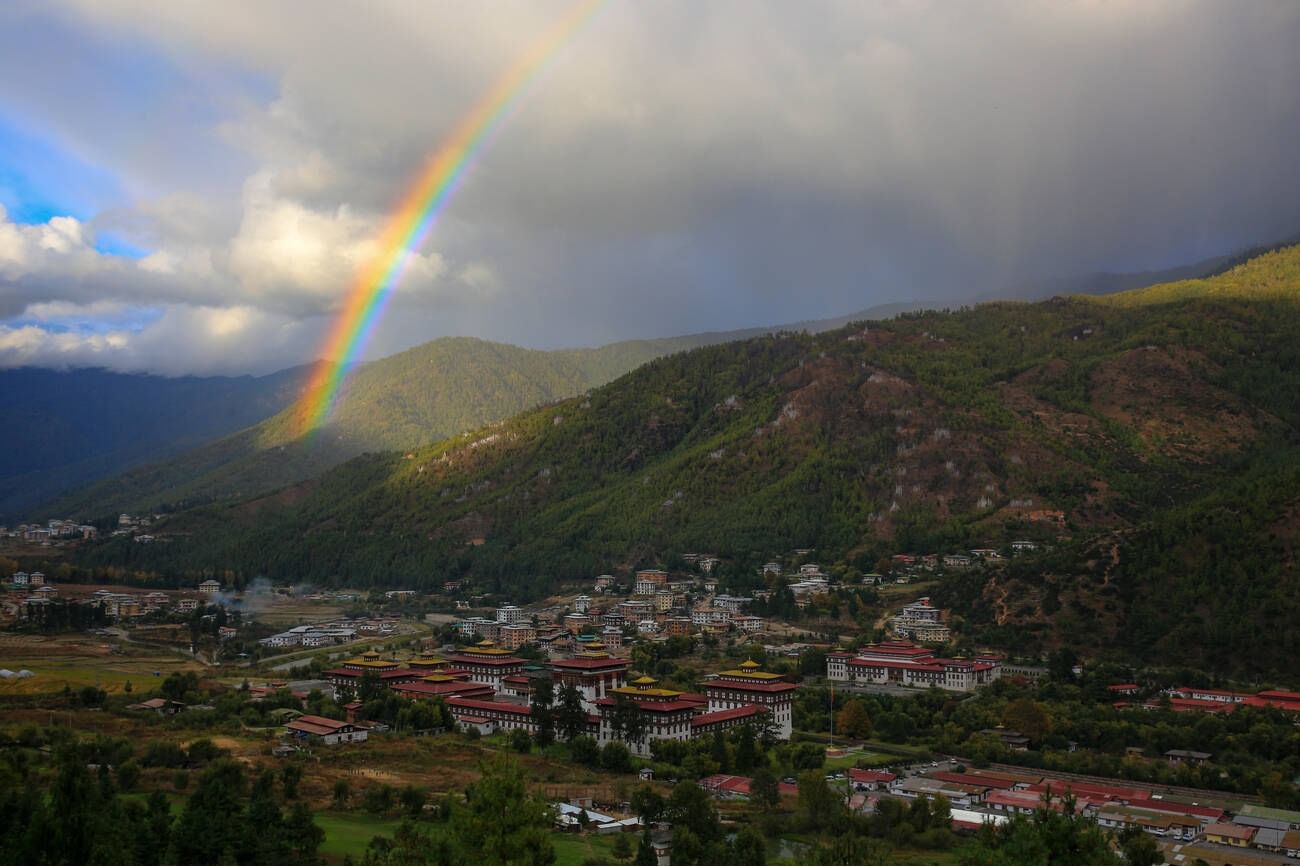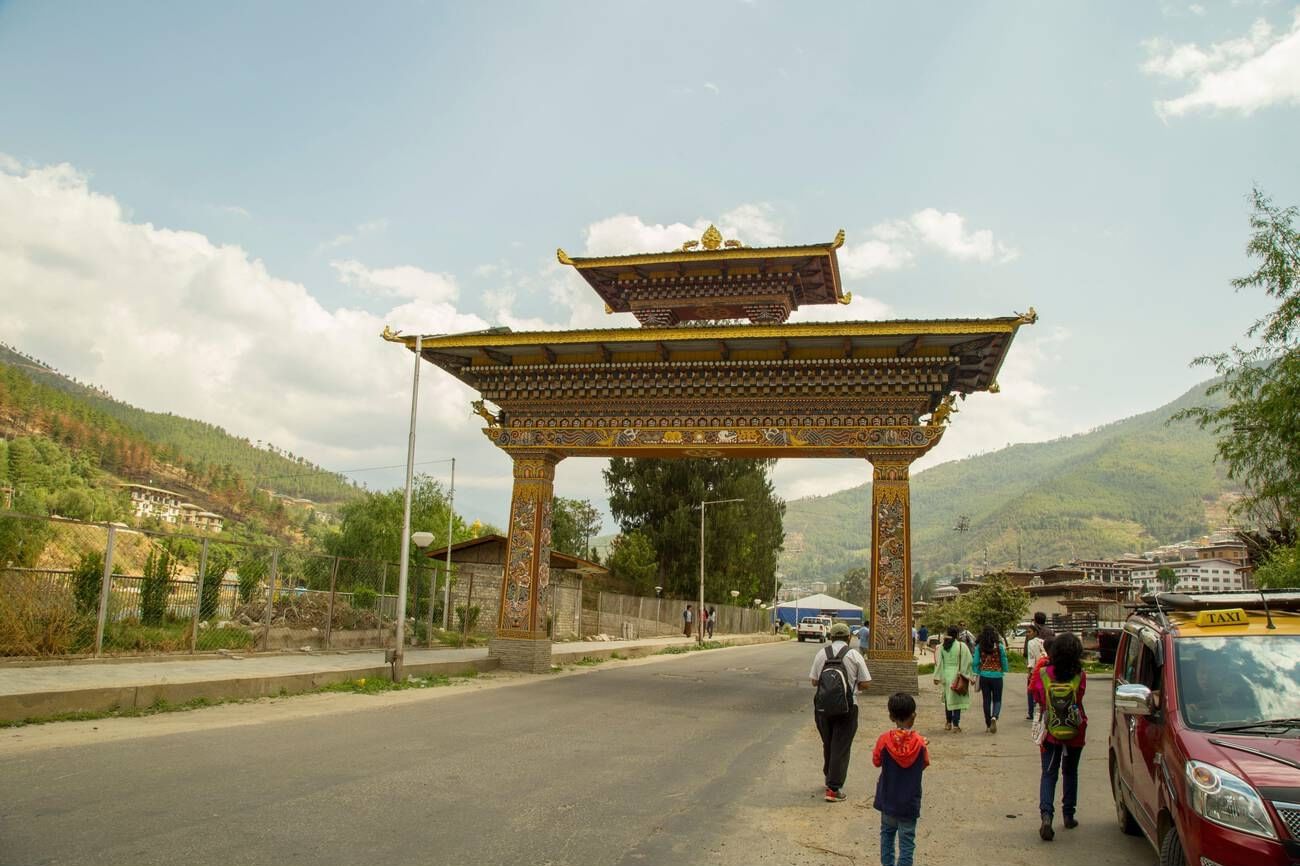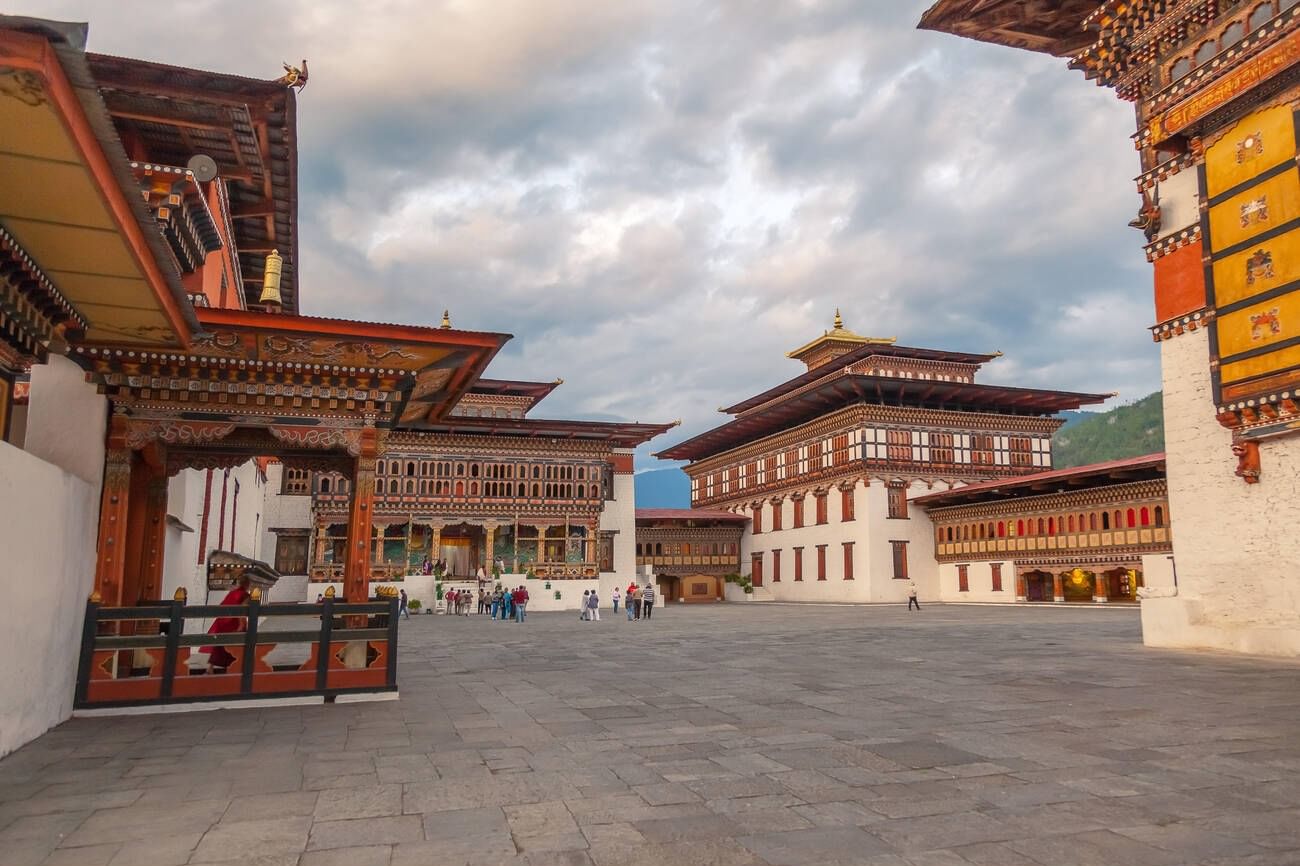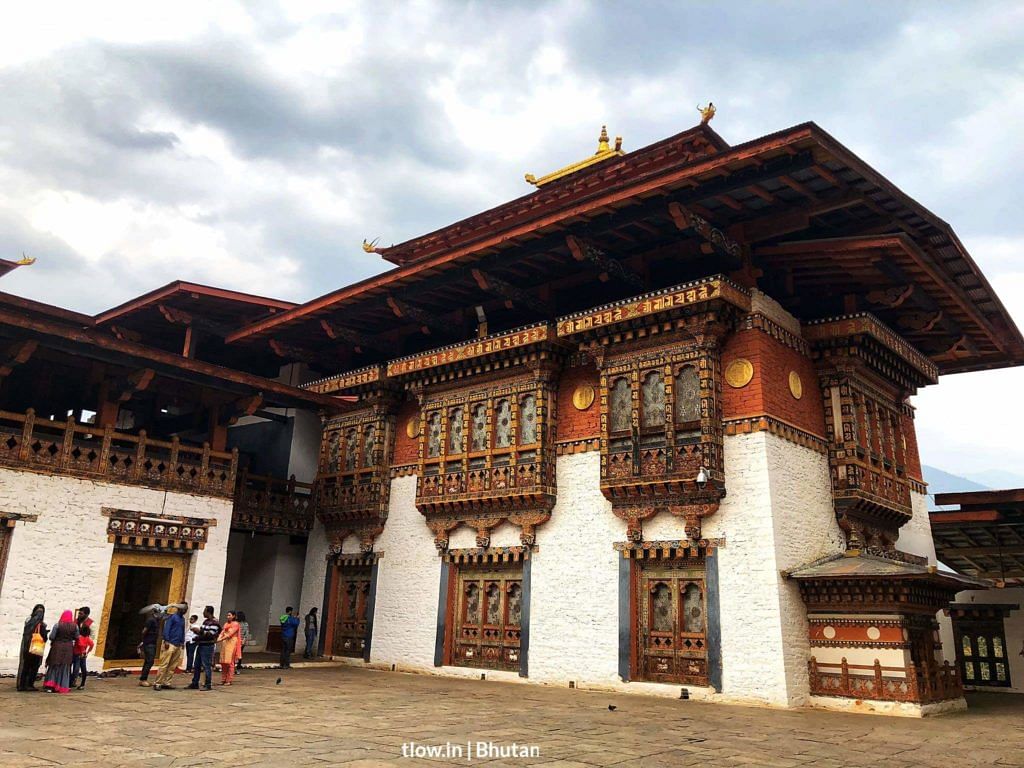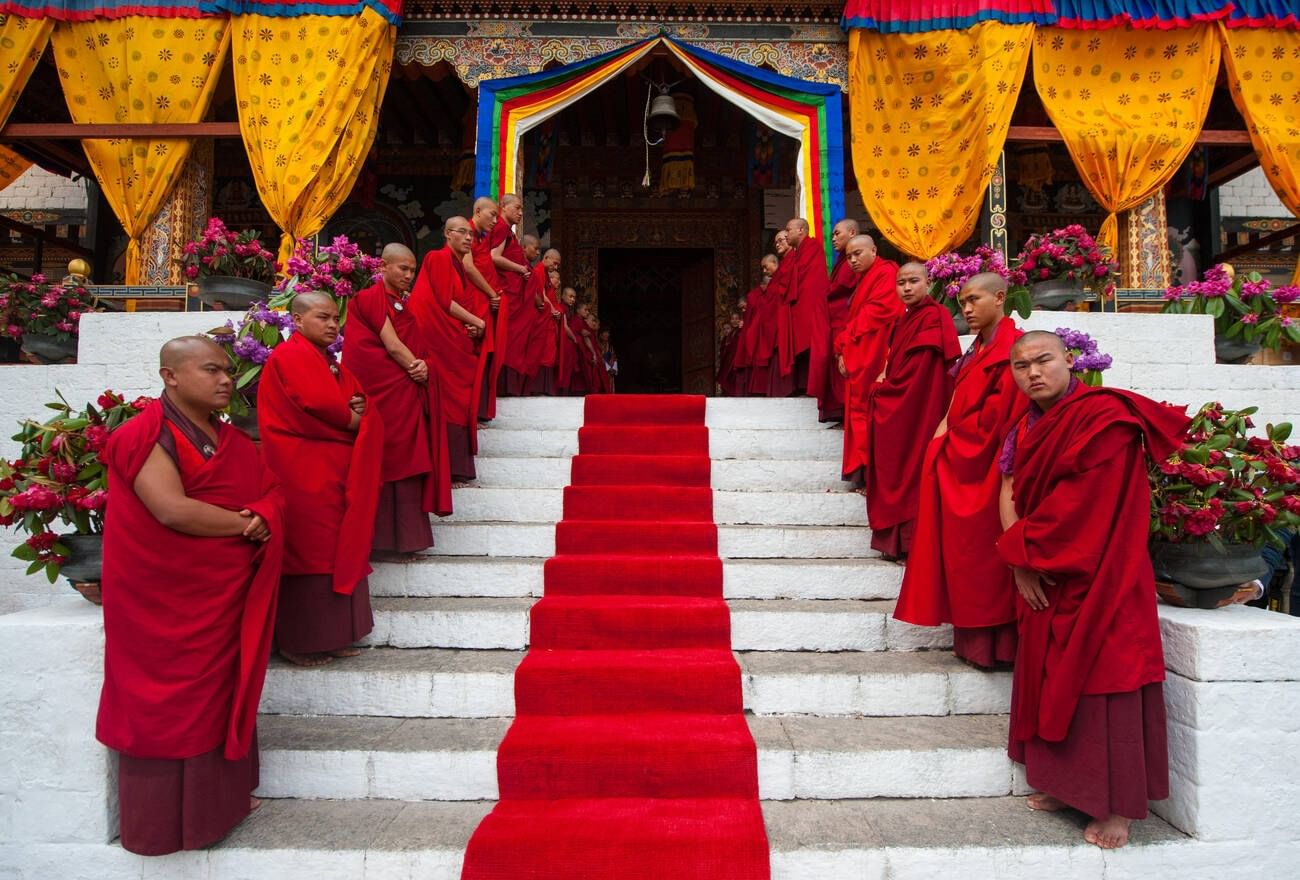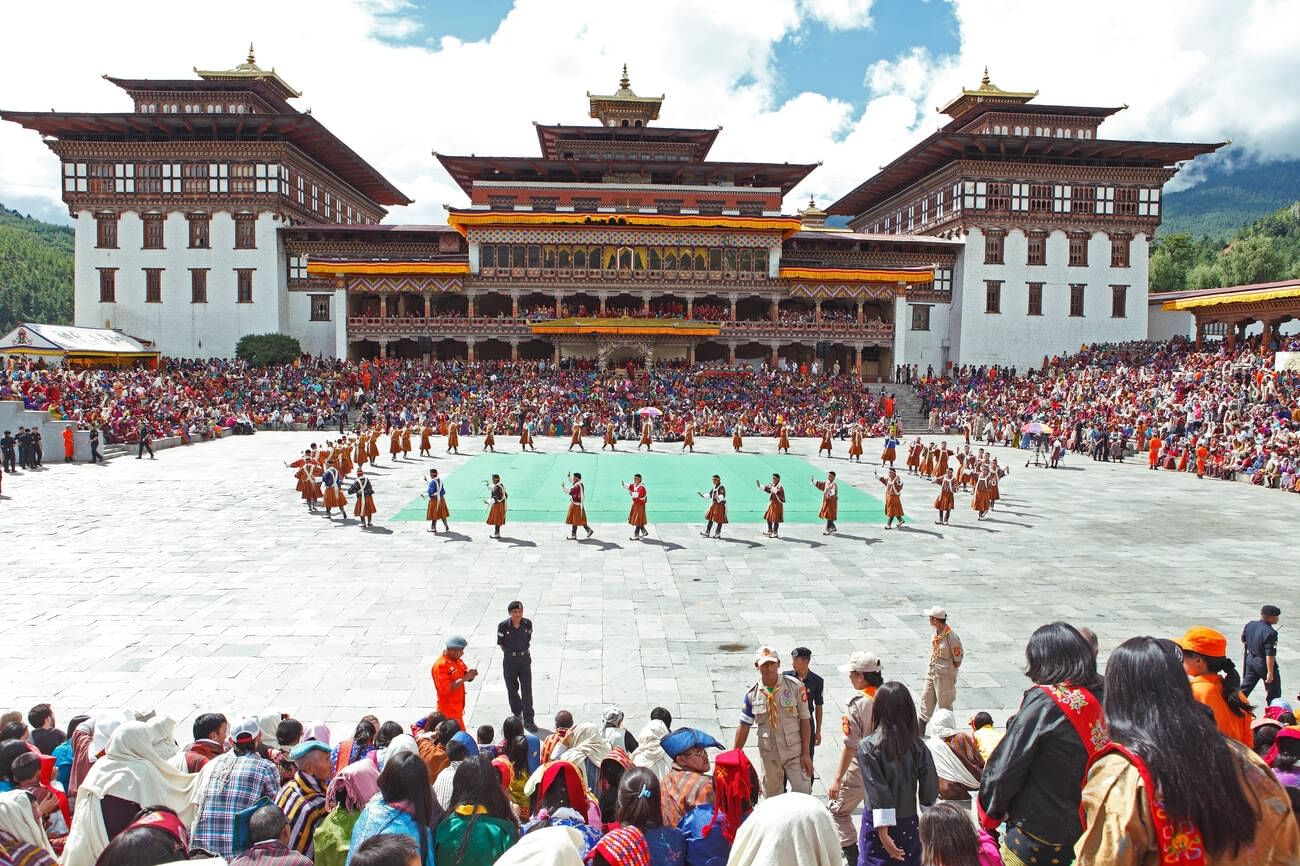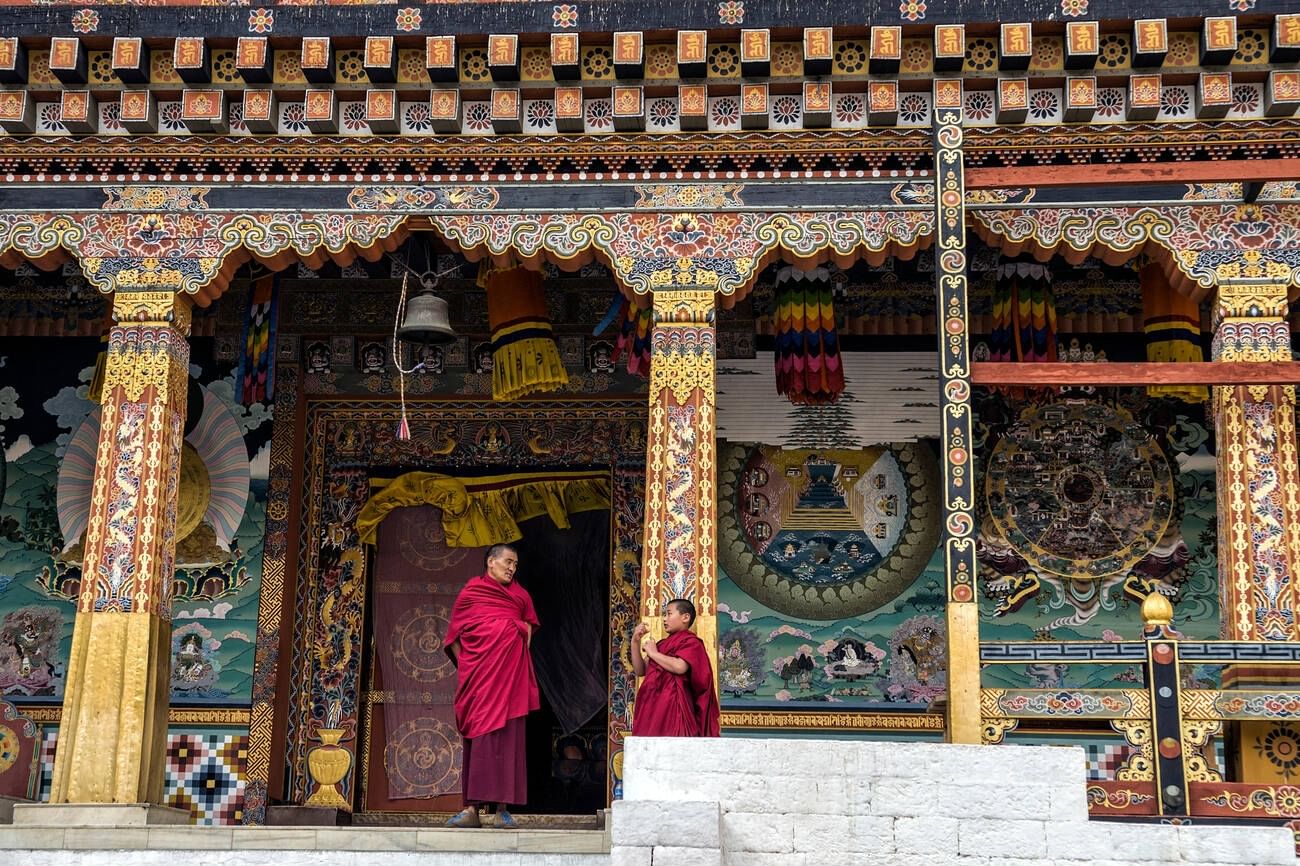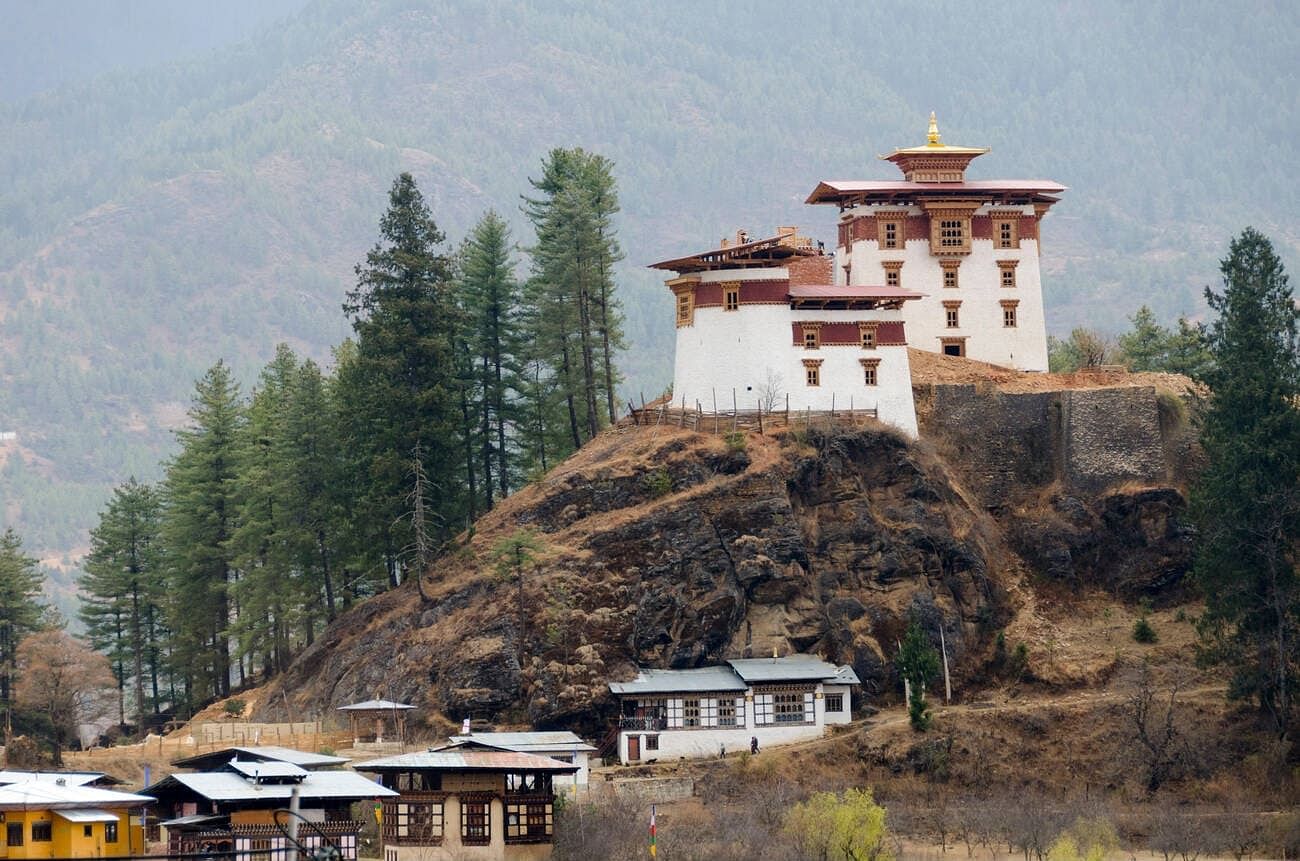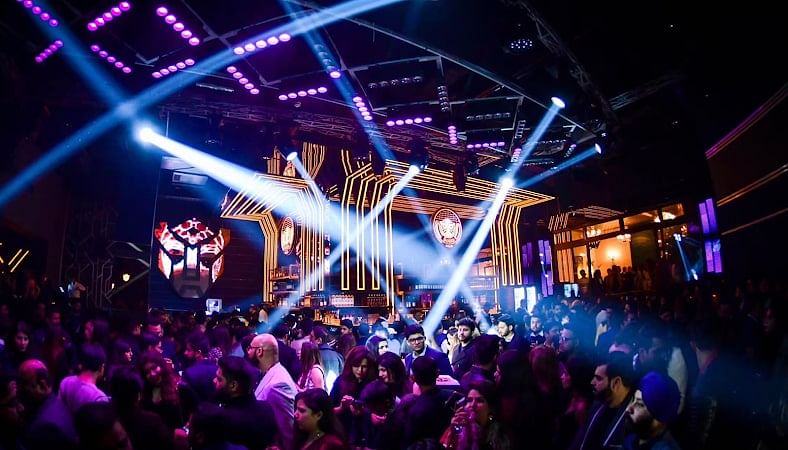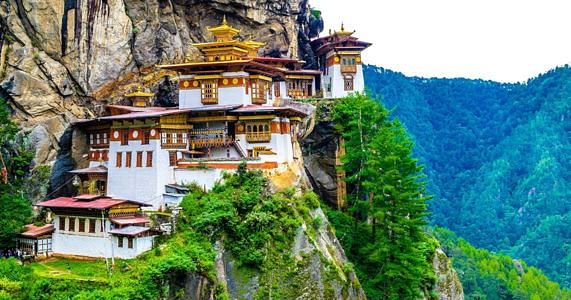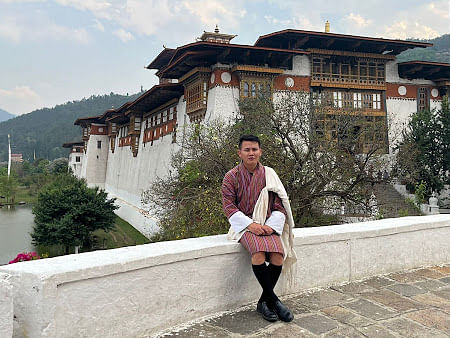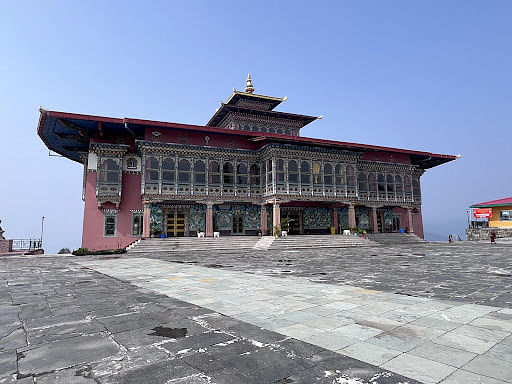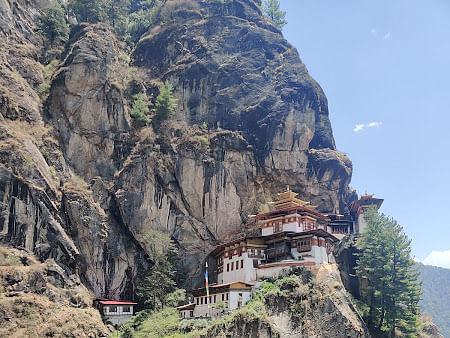There's something about Tashichho Dzong that hits different when you see it in person. This isn't just another tourist spot in Thimphu - it's where Bhutan's King actually works every day, and monks have been living here for centuries.
The place has a history going back to the 1300s.
They rebuilt most of it in the 1960s, but the vibe is still very much old-world Bhutan. What gets me is how they use it for both government work and religious stuff. Cabinet meetings happen in one wing while monks are chanting prayers in another. If you're making a list of places to visit in Bhutan, this needs to be right up there. It sits by the Wang Chhu River, and the whole setup is pretty impressive - white walls, gold-topped roofs, green lawns, the works.
You can visit in the evenings during the summer months when they let tourists in. Tashichho Dzong Bhutan is one of those spots that actually lives up to the hype. Our Bhutan Tour Packages cover this and other must-see places, so you won't miss out on what makes the country special. Trust me, it's worth the trip.
What is the History of Tashichho Dzong in Bhutan?
The history of Tashichho Dzong dates back over 800 years. Originally, in 1216 A.D., a small monastery was built at Dechen Phodrang by Lama Gyalwa Lhanangpa. This site served as a spiritual centre, but it was in the 17th century that the dzong took its current form. Zhabdrung Ngawang Namgyal, known as the unifier of Bhutan, relocated and expanded the dzong to its present location to strengthen Bhutan’s spiritual and administrative control.
Over the centuries, Tashichho Dzong has seen fires, earthquakes, and reconstruction. Each rebuilding preserved Bhutanese architecture and traditions, ensuring that the dzong remained a central symbol of Bhutanese identity. The most extensive renovation took place in the 1960s, which shaped the dzong as we see it today. Walking through Tashichho Dzong Thimphu, you can feel the layers of history embedded in its walls and courtyards.
best selling bhutan tour packages
Architecture of Tashichho Dzong
The Tashichho Dzong architecture is a fine example of Bhutanese craftsmanship. The fortress features massive whitewashed walls that rise from the riverbank, golden roofs that glisten in the sun, and intricately carved wooden windows and doors. Unlike modern buildings, the dzong harmonises beautifully with the natural surroundings, creating a sense of peace and grandeur simultaneously.
Inside, the dzong houses temples of Bhutan, administrative offices, and courtyards. Every hall and chapel is decorated with traditional Bhutanese murals, statues, and paintings depicting Buddhist teachings. Walking through Tashichho Dzong Bhutan, you can appreciate the careful balance between functionality and spiritual symbolism – a feature that makes Bhutanese dzongs unique compared to other fortresses in the world.
Best Time to Visit Tashichho Dzong
Visiting Tashichho Dzong is best planned according to the seasons to enjoy pleasant weather, clear views, and cultural experiences. Here’s a month-wise guide:
- March to May (Spring): Enjoy mild weather and blooming landscapes. Perfect for sightseeing, photography, and peaceful walks around the dzong.
- June to August (Monsoon): Heavy rains make paths slippery and visibility low. Not ideal for visiting.
- September to November (Autumn): The best time to visit. Mild temperatures, clear skies, and the lively Thimphu Tshechu festival make this season unforgettable.
- December to February (Winter): Cold mornings with possible fog. Fewer tourists, offering a quieter experience for those who don’t mind chilly weather.
How to Reach Tashichho Dzong
Tashichho Dzong is located in Thimphu, Bhutan, on the northern edge of the city along the banks of the Wang Chhu River. It's approximately 2 kilometres from the city centre and about 50 kilometres from Paro International Airport.
From Paro International Airport
The nearest airport to Tashichho Dzong is Paro International Airport, situated about 54 kilometres away. Travellers can hire a taxi from the airport to Thimphu, which takes around 45 to 50 minutes.
Within Thimphu
Once in Thimphu, Tashichho Dzong is easily accessible:
- By Taxi or Private Vehicle: Taxis are readily available throughout Thimphu. A short ride to the dzong is convenient and affordable.
- By Foot: If you're staying near the city centre, Tashichho Dzong is within walking distance. A leisurely 20–30 minute walk along the Wang Chhu River offers scenic views.
- By Local Bus: Public buses operate within Thimphu, providing an economical option to reach the dzong. Check local schedules for routes passing near the dzong.
Tashichho Dzong Visiting Hours and Entry Fee
For visitors, Tashichho Dzong visiting hours depend on the day of the week. On weekdays, government work continues inside, so tourists are allowed only after office hours, typically after 5 PM.
Visiting Hours
- Monday to Friday: 5:00 PM – 6:00 PM
- Saturday and Sunday: 9:00 AM – 5:00 PM
Please note that access to the dzong is permitted only during these hours, as it serves as the administrative seat of the government during weekdays.
Tashichho Dzong entry fee
- Foreign Nationals: INR 500
- SAARC Nationals: INR 150
- Bhutanese Citizens: Free
The entry fee includes a guided tour, allowing visitors to explore the dzong's rich history and architecture.
Things to Do in Tashichho Dzong
There are many things to do in Tashichho Dzong that make your visit memorable:
- Explore the Main Temple: The temple houses sacred relics and beautifully painted murals.
- Walk Through Courtyards: The open spaces are perfect for photography and enjoying the peaceful atmosphere.
- Observe Monks at Prayer: Watching the monks’ daily rituals offers insight into Bhutanese spirituality.
- Attend Thimphu Tshechu: If visiting during the festival, experience the traditional dances and celebrations.
- Enjoy Scenic Views: The dzong overlooks the Wang Chhu River and surrounding hills, providing picturesque spots for relaxation.
For anyone interested in photography, culture, or spirituality, Tashichho Dzong offers plenty of opportunities to connect with Bhutan’s heart and heritage.
Places to visit in Tashichho Dzong
There are several interesting places to visit in Tashichho Dzong:
1. Throne Room (Lhakhang Sarp)
The throne room is the ceremonial heart of the dzong, where the King of Bhutan conducts official duties and audiences. The room is adorned with intricate woodwork and religious murals, reflecting the fusion of governance and spirituality.
2. Central Courtyard (Chokhor)
The central courtyard is a spacious open area surrounded by the dzong's buildings. It serves as a venue for various religious ceremonies and festivals, including the annual Thimphu Tshechu. The courtyard's design facilitates the congregation of large numbers of people during these events.
3. Monastic Quarters
The dzong houses the central monastic body of Bhutan, with monks residing in the monastic quarters. Visitors can observe the monks' daily routines, including prayer sessions and rituals, providing insight into Bhutan's monastic life.
4. Protective Deity Chapel (Goenkhang)
The Goenkhang is a sacred chapel dedicated to protective deities. It is considered one of the most sacred areas within the dzong, and entry is typically restricted to monks and high-ranking officials.
5. Ney Khang Lhakhang
Located to the west of the dzong, Ney Khang Lhakhang is a smaller temple housing statues of Sakyamuni Buddha and other protective deities. It offers a serene environment for meditation and reflection.
6. Dechen Phodrang
Situated above the dzong, Dechen Phodrang is the site of the original Tashichho Dzong, constructed in 1216. While the current dzong was rebuilt in the 17th century, Dechen Phodrang remains a significant historical site.
The most famous event held at Tashichho Dzong is the Thimphu Tshechu, one of Bhutan’s biggest and most colourful festivals. It usually takes place in September or early October, depending on the lunar calendar, and lasts for three days.
During the festival, monks and laymen perform beautiful masked dances (Cham dances) in the courtyard of the dzong. These dances are not just entertainment – each one has a deep religious meaning, telling stories from Buddhist legends and honouring Guru Rinpoche, the saint who brought Buddhism to Bhutan.
One of the highlights is the unveiling of a huge religious scroll painting called the Thongdrol, shown at dawn on the final day. Locals believe that even catching a glimpse of it can wash away sins and bring blessings.
The festival is also full of life outside the rituals. You’ll see people from across Bhutan coming to the capital dressed in their best traditional outfits. The air is filled with laughter, the energy of families gathering, and the playful tricks of the Atsaras, sacred clowns who entertain the crowds while keeping the spirit of the festival alive.
Apart from the Thimphu Tshechu, the dzong also hosts several religious ceremonies and state events throughout the year, but none match the scale and cultural importance of this grand festival.
If you plan to attend, it’s good to:
- Book your stay in advance, as Thimphu gets crowded.
- Arrive early, especially on the last day, to witness the Thongdrol.
- Dress modestly and respect the customs, since this is a deeply spiritual event for the Bhutanese people.
Cultural Significance of Tashichho Dzong
The Tashichho Dzong cultural significance cannot be overstated. This dzong is more than a historical building; it is a living centre of Bhutanese culture and governance. It serves as the summer residence of the Chief Abbot of Bhutan, known as the Je Khenpo, and houses offices for the King, as well as the Ministry of Home and the Ministry of Finance.
Tips for Visitors
- Wear comfortable shoes for walking across courtyards and steps.
- Dress modestly, covering shoulders and knees, as it is a religious site.
- Carry water and light snacks, as exploring the dzong can take a few hours.
- Hiring a local guide helps you understand the history, architecture, and cultural significance.
- If possible, plan your visit during the best time to visit Tashichho Dzong, either spring or autumn, for pleasant weather and clear views.
Tashichho Dzong is more than just a fortress. It is the symbol of Bhutanese pride, faith, and tradition. Every traveller who visits Bhutan should include it in their itinerary. From its stunning architecture and scenic location to its vibrant festivals and spiritual importance, Tashichho Dzong Thimphu provides a complete experience of Bhutan’s culture and heritage.
Whether you are interested in history, architecture, photography, or spirituality, this dzong has something for everyone. By visiting Tashichho Dzong Bhutan, you are not just seeing a building – you are connecting with the soul of Bhutan.




